Package Delivery System
Currently, there are companies that are building drones to deliver packages to customers. As a way to make the drones work in the real world, we must have a simulation that shows the real scenarios that could affect how the drones are being delivered to the customers, such as avoiding tall buildings, using the most cost-effective paths, and what to do when the batteries drain out.
Dustin Zhang, Aunya Mukherjee, Lin Huynh and I used many design patterns and algorithms that we learned from the CSCI 3081W - Program Design and Development class taught by Professor Timothy Wrenn to make the drone and robot deliveries as efficiently as possible.
Throughout the project, there are three iterations, where each iteration is built on top of the previous one. Everyone in the team must work by themselves for the first iteration, and then combine all of the code and work/collaborate toward iterations two and three simultaneously. The following reflection details are based on the final iteration.
Features
- Drone and robot carriers can deliver packages to customers
- Only drone carriers can choose which route they’d like to take: Beeline, Parabolic, or Smart route, while robot carriers can only use the Smart route
- Beeline route:
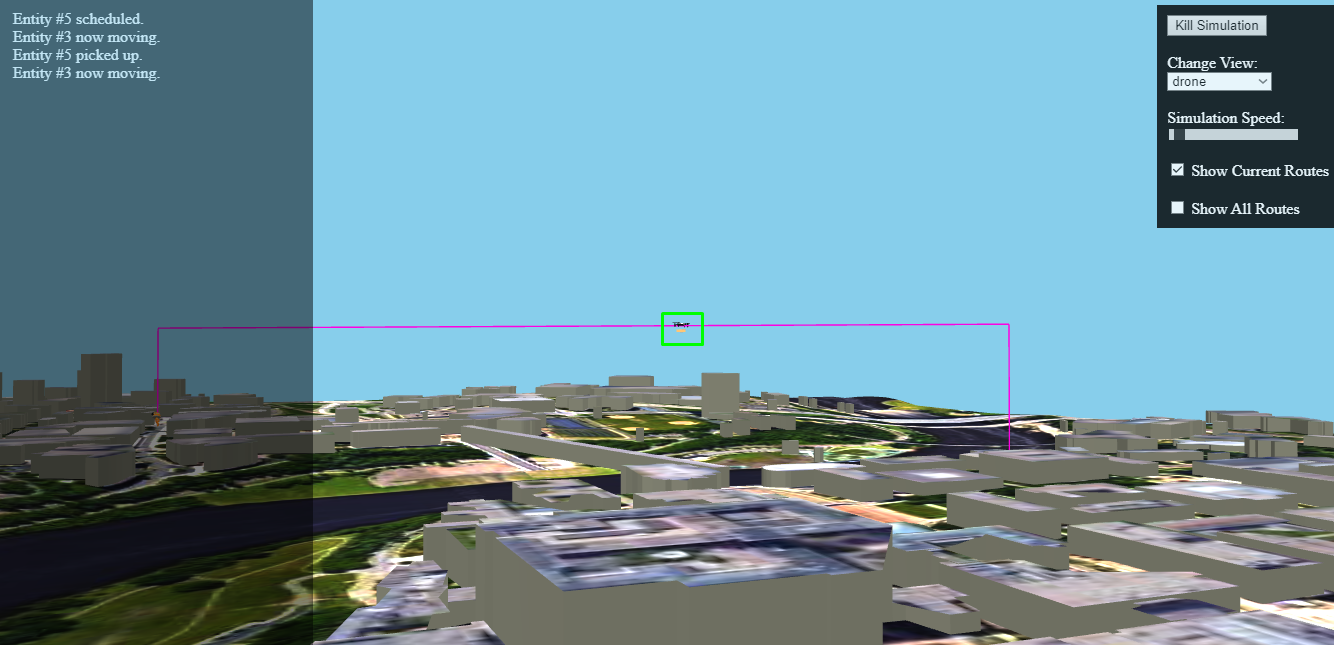
- Parabolic route:
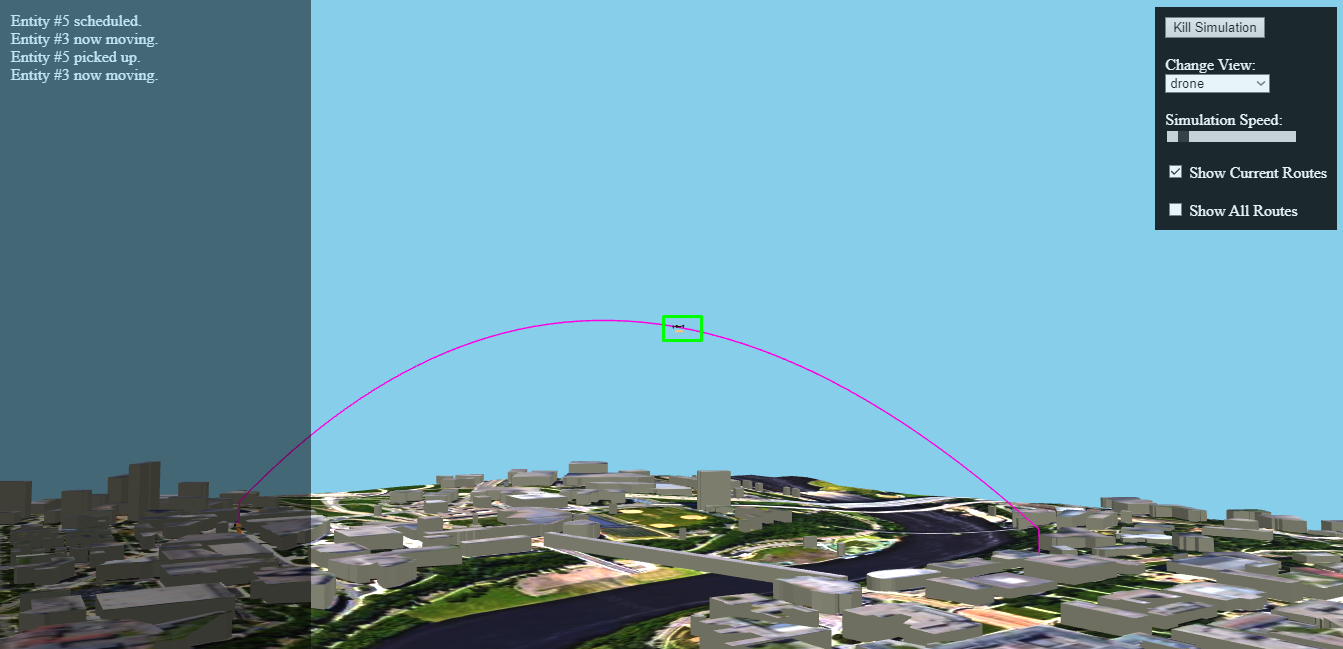
- Smart route:
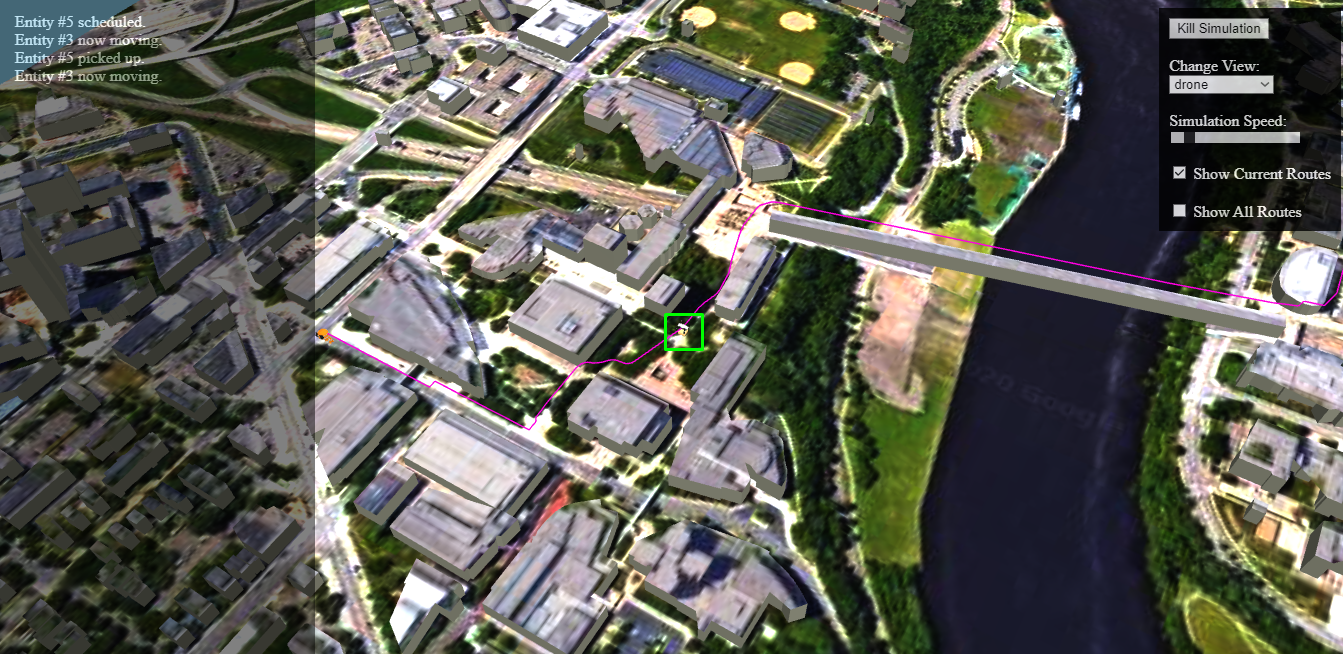
- Beeline route:
- Recharging carriers stay at the charging station and get out to help when another carrier has notified the station that its battery is all out
- Just to be fair to the customers, the charging station stores all of the dead carriers in a queue
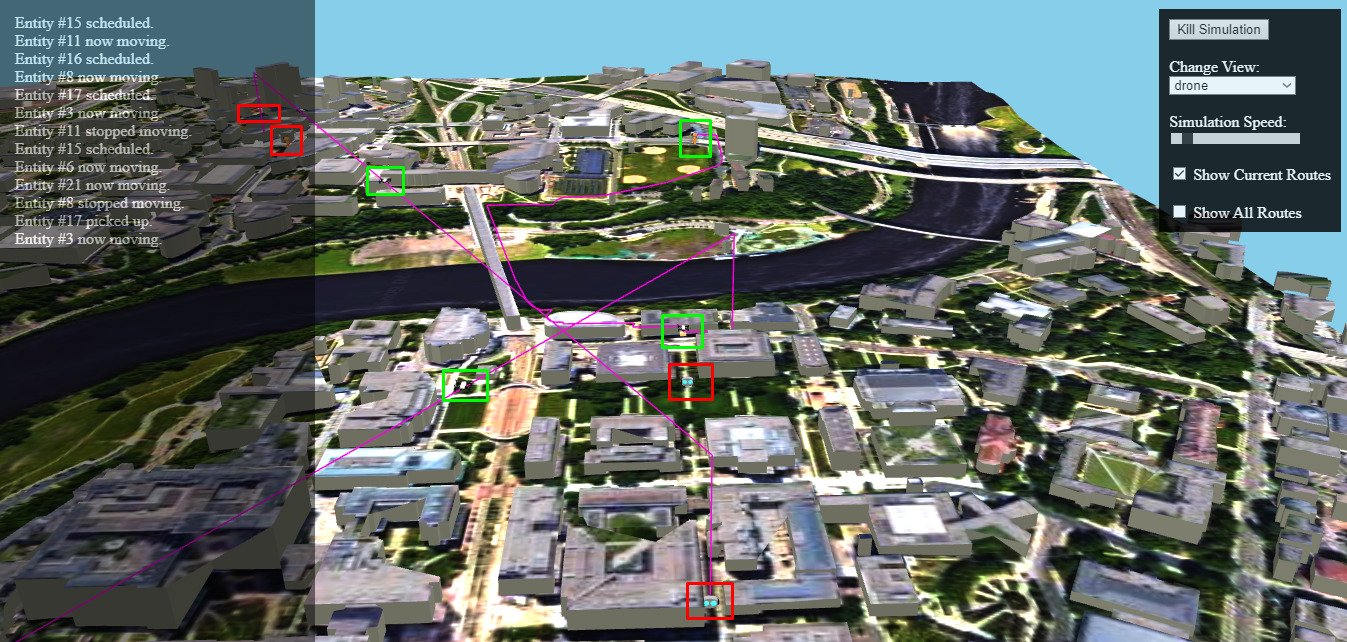
- Dead carriers: highlighted red; Alive carriers: highlighted green
Documentation
Please head over to our Documentation page to understand more about our projects’ code and progress!
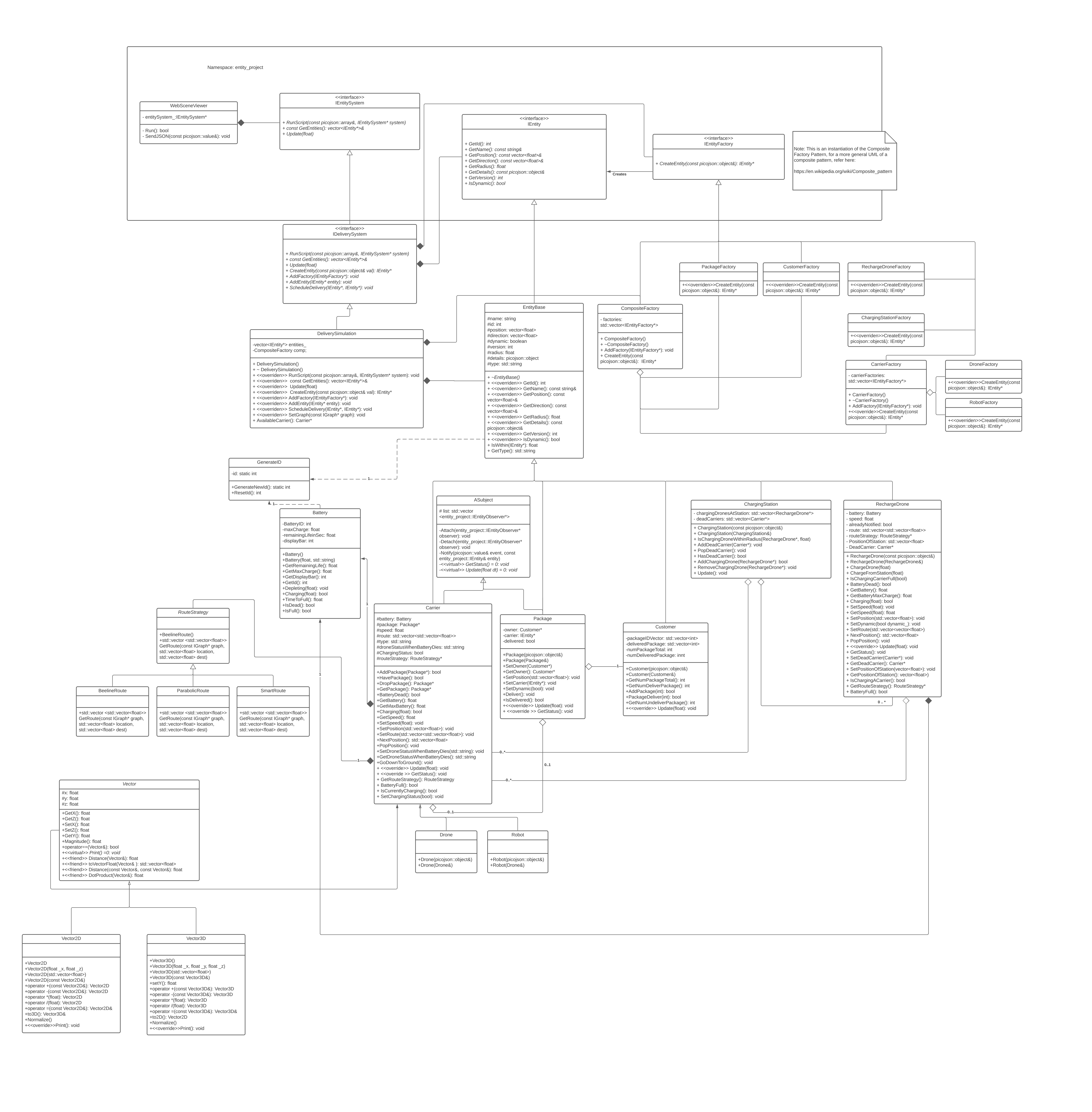
Contribution
- Keep team members on track and make sure group deadlines are being met
- Manage the project timeline using Trello and plan different tasks
- Simulate the drone and robot carriers to deliver the packages from point A to point B (the customer)
- Write Google tests and document code
- Add robot carrier to deliver packages with Smart route
- Add the Smart and Beeline routes for the drone deliveries
- Implement the Battery class: charging, depleting, calculating remaining battery life, and so on
- Update the carrier to check if its battery is dead. If so, the carrier must drop to the ground and stop what it’s doing.
- Work on and implement Carrier, Composite, and Package Factories
- Handle the subjects with 3D vectors
- Contribute to help with the UML diagram
- Review teammates’ codes and approve/disapprove Pull Requests
- Deliver a presentation of the overall project
Lessons Learned
- How to use Docker to develop, run, and manage application
- How to utilize the Strategy, Factory, and Observer patterns
- Writing thorough Google tests for every subject from the simulation can be challenging, but it is definitely useful and helpful to make sure the code works perfectly for current and future releases
- Since we had control over this project, over what we wanted to do and how to implement it, we were able to have clear communication with other team members to make major decisions
- How to use GitHub more effectively as a team: issue numbers, code reviews, pull requests, merging conflicts, etc.
- Group check-in two to three times a week and messaging/notifying each other when we have questions or concerns is a great way to keep everyone on the same page
What Could We Do Differently?
- Change the capacity at which the recharge drone starts heading to the charging station
- Utilize strategy patterns to make better choices for routes
- Multiple charging stations/drones with multiple charging stations
- Fly back to any nearby recharging station
- Charge dead carriers close to charging drone